

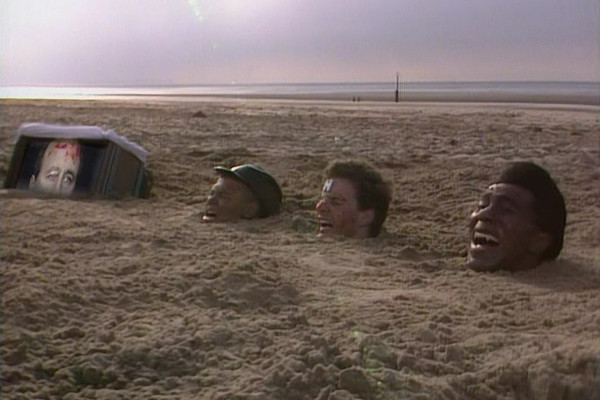
Any debate about which is the best series of Red Dwarf isn't particularly reliant on whether the sets improved, the acting got better, or the plots more involved. More crucially, as a comedy series, it's a comedy show that changed its style of humour throughout. Consequently, the comic intent of the programme changes from year to year, so ranking them all is rather like comparing apples and oranges... and, well, Lemons.
While series six was content to adopt a more Americanised "one-liner per minute" model, series two was more about character comedy. Not only that, but while the series began to point more heavily towards the American market (including bringing on board a Canadian-accented robot, "clips" titles and Lister referring to himself with the very non-UK term of "bum"), the earlier series pointed towards a more provincial English comedy.
Tony Hawks (here in his fifth of eight roles, most of them vocal) plays a guide to "Better Than Life", an immersive computer game. Hawks is amusing, but was more known for his novelty Top 5 single "Stutter Rap", and the too-late TV series which failed to cash in, airing 16 months after the record was released. Although some more alternative names pop up throughout the series, such as Morwenna Banks and Tony Slattery, they're still very "safe" choices, for an episode that has some gags that could have seamlessly fitted into ITV peer Home To Roost. (Note that Rimmer's reaction to his tax bill is an almost identical comedic device to Henry finding what he thinks is Matthew's school report... though, in fairness, both are very old comic devices).
If this was all Better Than Life was, then it would still be charming and likeable. However, the show continues to mine extra depth, by giving Rimmer the news that his father has died. The episode introduces the observation deck, as Rimmer looks into space and reveals his traumatised childhood to Lister. Sadly, their bonding is somewhat undermined by Lister and Cat bullying him during the game itself, though Rimmer refusing to accept nice things happening to him is a good touch. The episode was made into the second novel, and also the core concept was clearly inversed for Back To Reality. A lot of the character developments in this instalment have been retroactively made redundant after being contradicted in later episodes, particularly the Dave ones, but Better Than Life is worth rewatching with a 1988 mindset...
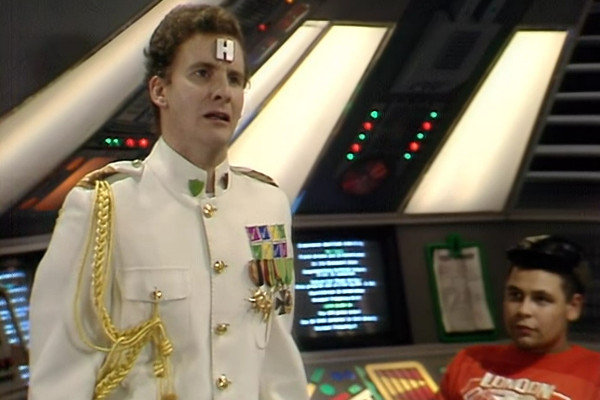
Me2 is where Red Dwarf finally starts to get it right, an episode that comfortably leads in to the greater quality of series two. The idea of not being able to get along with yourself was a striking one, first mooted when Lister got his own hologram in the unmade episode Bodysnatcher. Crucially this is the first time where a softer side is seen to Rimmer, with an ending that shows him bearing his soul in despair.
Of particular note is how raw Charles's acting still is, frequently looking out towards the studio audience (flagged up by Danny John-Jules on the commentary track), and at one point silently mouthing along to John-Jules's lines as the Cat speaks, presumably to keep track of the script. Charles admits that he was very much a novice, confessing on the commentary track to The End that "this is the first time I'd ever acted, and it kind of... shows."
While series two features the same sets, there was a real attempt to add a splash of colour to mix things up. While the original sets add much to the feel of the programme, the series one greyness that extends even towards food and drink cartons is overwhelming. There's a nice send up of this particular bit of BBC budgeting where Rimmer argues over the Skutters decorating from ocean grey to military grey.
Rimmer getting a double did, perhaps unfortunately, become an "easy option" for future stories, and the first sign of the focus slipping away from Lister and towards Rimmer can already be seen. Not even counting his good and bad selves in Demons and Angels, or his female self in Parallel Universe, "multi-Rimmer" stories have occurred five times. Especially notable is that Rimmer's self-praise of "what a guy!" here is run into the ground for the second "duplicate Rimmer" story, Dimension Jump. Me2 is the first and best of them, and the real start of Red Dwarf's purple patch.
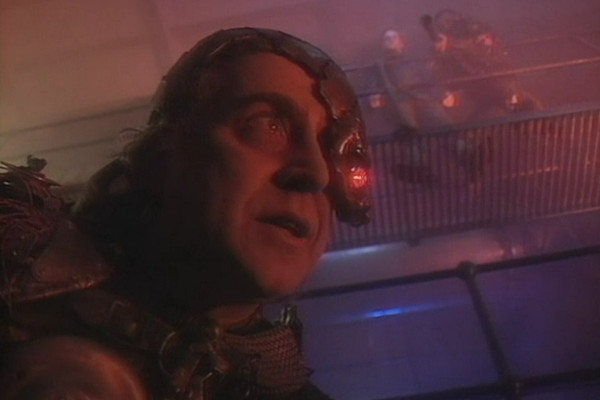
The fourth series marked a move to Shepperton Studios instead of the previous Manchester base, and the vast increase in ship rooms and corridors is an improvement. However, visually series four is perhaps the blandest of the first six series, with a very flat lighting scheme. This is particularly obvious with Craig Charles's skin tone, which is notably different to how it appears in other seriess, and makes his suggestion here that "maybe I could wear a turban and pretend I'm from India" work. The cast regularly discuss the lighting for the following two series, with the balance between Kryten's face and Danny John-Jules's skin tone causing problems for the lighting director, and seeing the lights frequently turned down.
Justice begins with a slightly silly visual gag, featuring Lister with a giant "space mumps" head, but soon progresses into one of the finest editions of the series, featuring a karma-based field system, and the question of Rimmer's guilt over the radiation leak that killed the Red Dwarf crew. Continuity is changed here, with the writers tying the series more to the strong series of novels, changing the number of the crew from 169 to 1,169. Almost a top five Red Dwarf episode, this one isn't as crammed with laughs as other instalments, but instead is filled with concepts and ideas... a rare occurrence of Lister being on the receiving end of a final punchline sees his preachy nature interrupted by a fall through a manhole, which the others welcoming the peace and quiet.
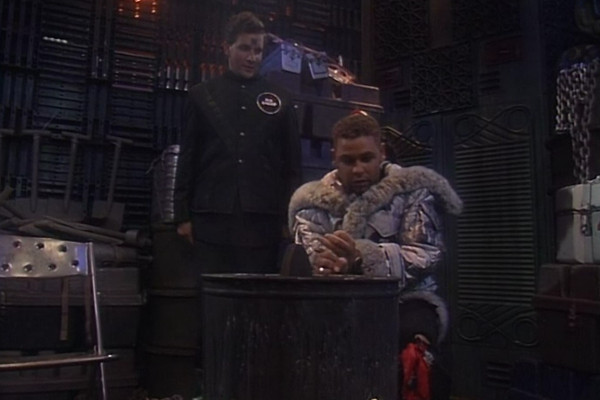
Proof, if any were needed, that all you really need for a good episode of Red Dwarf is Rimmer and Lister confined in a close space, talking... providing, at least, that they have something to say. Of course, such things are harder to write than the more generic "gag a minute" format that the show later devolved into, and any new backstory threatens to contradict what came before: even here Rimmer's story of losing his virginity is at odds of what we learned in series two. Yet Marooned is a real highlight, arguably only bettered once afterwards. Certain shots using hand-held cameras are an odd stylistic choice, but show a series that was still daring to experiment, whether it paid off or not.
There's some amusing goofs and ill-thought out developments here and there, from the screen projection of Starbug's "windows" not being keyed in when they first appear, to Rimmer being able to smell and touch a microphone control button. Perhaps the most curious though is that Rimmer is revealed to be rich by having saved £24,000... which overlooks that such an amount would likely be next to worthless in 2077, let alone the additional three million and three years.
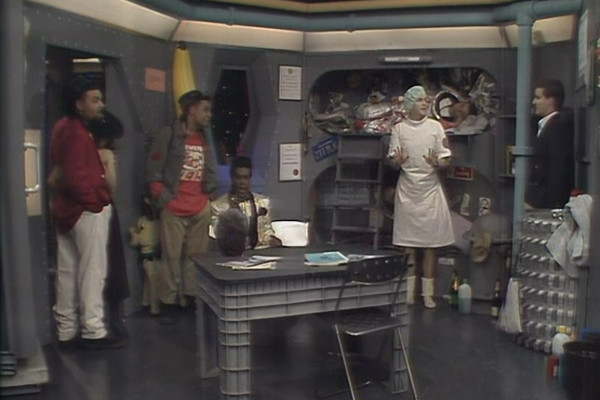
Another very clever plot that revisits the ship before the crew were wiped out, placing the Red Dwarf crew of the present into their own past. While the footage is newly-shot, rather than inserting new material into old episodes, this does predate Back To The Future II by a year, so was nicely ahead of the curve. Not that people visiting their past in sci-fi is especially new, but it's done with invention, and the science fiction, which could get a little too nerdy in later series, is here kept light, particularly with Cat's "what is it?" scene. It's a SFX-heavy episode made in a time before the programme could produce competent special effects... which only adds to the charm and comedy, not detracts from it. Sadly, a mentality that such things needed to be "fixed" led to projects like the Remastered episodes.
The original guest cast return for a final time, with Mac McDonald back as Captain Hollister and Clare Grogan as Kochanski. Grogan would make a return appearance as a hallucination of Kochanski in Psirens (1993), before being replaced by Chloë Annett in 1997. Hollister, meanwhile, would return in 1999 and 2017, but it was a very different, broader take on the character, with a completely different acting style from McDonald. Overall, it would have been better if they'd both stopped here, though that could be said about so many things after the Grant-Naylor partnership split.
Those looking for continuity issues may note that the more colourful series two decor is retained in the "past" scenes, including the giant inflatable banana... and also that the Lister-Rimmer dynamic isn't full of the hatred that it was in series one. Those really looking for anal trivia may note that the date they arrive back in the past is Wednesday 2nd March 2077... which would actually be a Tuesday. Lister claims that this is "three weeks" before the blast that killed the crew, which, if we take this literally, means that the crew were wiped out on the 24th March. In all, this is a very good episode of Red Dwarf, and there's just a hair's breadth between it and the third place entry...
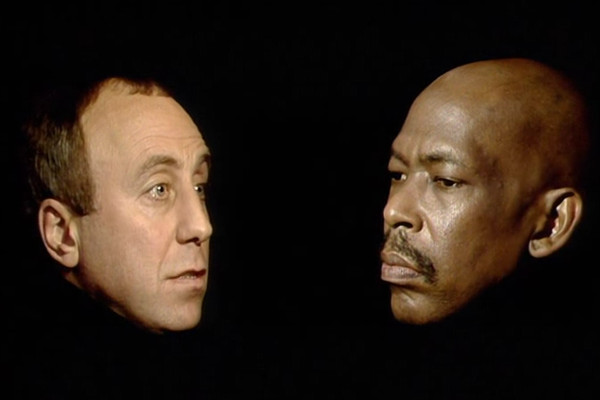
While still one of the best-ever episodes of Red Dwarf, Queeg does raise the question of how much rewatch value an episode has when it's almost entirely based around its punchline. Norman Lovett's Holly was generally a more abrasive character in the first series, reflecting everyone else's hostility, but with the NORWEB gag in Me2 Lovett got to really show what he could do. It's worth remembering that Lovett's role was initially just a voice-over, and his appearance was added later, but with Queeg we get the ultimate Holly story, and what was basically a 100 second throwaway gag in series one expanded to episode length.
There's still plenty to laugh at along the way, and, even if you've seen the episode multiple times and know what's coming, it raises a chuckle. There's a camaraderie in series two that the later series lacked, perhaps helped along by the fact that we spend much of it with the crew on "down time". Whereas later seriess saw plots often dictate the characters rather than the other way around, there's a number of "night time" scenes in series two, whereby even though there's no day in space, we see the trio sleep and go through evenings in their mundane existences. Sometimes though, it's best not to analyse a comedy show too closely, or to think too hard about the content... otherwise you might reflect on things like how disturbing Lister using Rimmer's inflatable doll really is...
One last thing to note is that - greyness and cheap special effects aside - the 80s episodes have held up reasonably well as the show was never about modern fashions. However, some of Cat's outfits are more Al from Quantum Leap than a trendsetter, and he wears a particularly chronic outfit here. Speaking of Cat, then this is the episode where where Danny John-Jules's mock-combative take on the nature of commentary audibly wears Norman Lovett down. "How many more episodes have I gotta do with you, Dan, till I come to series seven?" Lovett asks at one point, seemingly only semi-joking, "So I'll have a break of about three years."
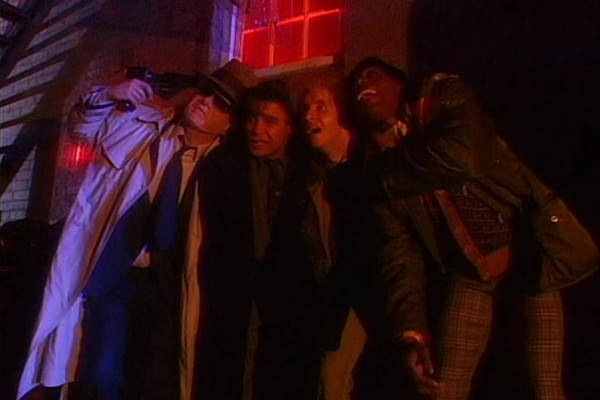
It's redundant to point out that Back To Reality is a little overrated, or that some other episodes are underrated in comparison, as even on its worst day it's easily in the top five.
Back To Reality became so popular that the series order was rearranged and it was put first on DVD releases... despite the fact that, as it could have been the last episode at the time, with the renewal of the show in doubt, it made the perfect series finale.
A strong mix of humour and drama, there was a climactic feel to season five that meant it could be seriously argued that the programme should have ended there. While that would have placed it 28 years in the past and perhaps have caused it to have been forgotten by many, Back to Reality was a great last episode, and nothing that followed came close.
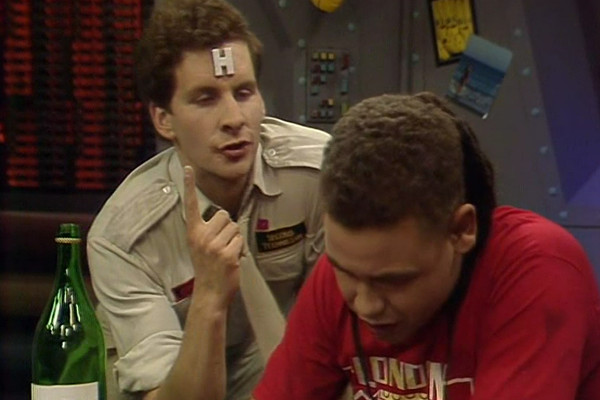
Not just the best episode of series two, but the greatest episode of Red Dwarf ever made. Grant-Naylor often wrote beneath themselves, but here they're at their best, delivering an intricate plot (of which a very similar plot appeared in the 1991 Next Generation episode Clues) and adding substance to what were originally somewhat two-dimensional characters. Way before the series began to lazily plough a path of one-liners and recurring gags, Grant-Naylor understood the importance of character-based dialogue, with Rimmer's "I've always got a pen" an inexplicable highlight that says so much.
Craig Charles admits on the series two commentaries that his immaturity at the time already led to a hyper-competitive atmosphere where they were concerned about who was getting the most laughs. Although the series begins and ends with ensemble pieces, and Queeg is very much a Holly episode, Thanks For The Memory is the middle of a trio of Rimmer-centred episodes. When written well, Rimmer is clearly the more interesting character with the most to explore, and, while Lister began as the lead role, it's something quickly pushed aside as early as this second series.
Having experienced love for the first time, and the pain of loss of love, Rimmer is both elated and heartbroken, with the added tragedy that it never actually happened. A classic.